(from the book: 'Levende Metalen' [= Living Metals] by L.F.C. Mees)
| One can look at minerals to find and compare the following qualities: |
| 1. Shine 2. Conductivity of heat 3. Heaviness 4. Malleability, plasticity 5. Conductivity of electricity |
One should bear in mind that the whole is always more than the sum of the parts. In other words, there has to be an organizing principle before the qualities mentioned above can be used. Or, first there is an idea: a product is an idea which has been made visible.
| The use of minerals throughout the ages: | |
| Stone age Copper age Bronze age Iron age |
no use of minerals copper tin and copper iron lead and mercury (quicksilver) came later |
Gold is the only mineral which can be found in a readily usable state. This was known to mankind very early. All other minerals can not be used as found in nature; they have to be taken out of the ore and refined. To do this one needs to use energy. If you leave the minerals out in the open they revert to the earth (iron rusts).
| The resistance to conductivity of heat and electricity increases as follows: |
| 1. lead 2. tin 3. iron 4. gold 5. copper 6. mercury 7. silver. |
Mercury forms an exception unless it is in a stable frozen form.
One could say that the first three are useful and the last three are beautiful - gold is in the middle.
We will look at the minerals in pairs.
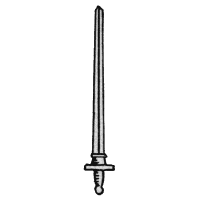
| Iron is used in: | rails, bridges, construction tools (as in: saws, hammers) weapons (formerly a sign of courage) |
| Iron has the power to support. Activity and courage are soul qualities with which man connects himself with iron. 'Masculine' qualities. There is a lot of iron in blood - especially in the red blood corpuscles - haemoglobin. But the blood serum contains about 100 millipercent iron and 100 millipercent copper. Men have slightly more iron, women slightly more copper. During pregnancy women have up to three times that amount of copper in the blood serum. The embryo has up to three times the amount of iron (both the male and the female embryo). |
|
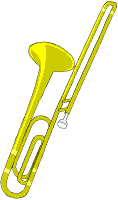
| Copper is used for: | roofs of temples, churches electronics, telephone) water taps - they fit well but also let go easily) |
| Copper encloses and surrounds. Enveloping, connecting and adaptability are soul qualities with which man connects himself with copper. 'Feminine' qualities. | |
Iron is found on the Northern hemisphere and copper is found in areas around the Pacific Ocean.
Lead is mostly found in the Western hemisphere (especially in the Andes mountains in South America).
Silver is found everywhere - also in solution as silver salt in sea water. But it is mainly found in lead ore.
| Lead is used in: |
printing (also in pencils) roofing water pipes coffins red-lead paint protection against x-rays |

Lead has a sealing-off, protecting-against function. This can also be seen in printing - an idea which is changeable has been cut off and given an unchangeable form. Also, printing protects the idea from getting lost.
Lead brings an action to a standstill. For instance lead poisoning accelerates the ageing process and vitality decreases to zero.
Lead as a mineral usually has a dirty grey color. If you cut it, it will shine for a moment before oxydizing immediately (it seals itself right away).

| Silver is used in: | mirrors photography jewelry |
As an analogy one can say it opens up to the outside world without criticism. It is the world of images: mirror image, photographic image. A mirror is unthinkable without light, photography is unthinkable without a dark room. So the interaction of light and darkness and the image without influencing.
While mirroring, the silver itself is invisible. When you look at a mirror you see yourself. Asking questions of the mirror. ('Mirror, mirror on the wall...'). The answer is irreversible for the moment. (How often do you stick out your tongue at the mirror or wrinkle your nose?). A mirror not only shows you yourself but also the space behind you (metaphorical: the past as an image).
Mercury is a heavy metal and at the same time it is a liquid. This goes against one's normal feeling of the way things should be. If one drops a little ball of mercury it splatters into many little balls and then it can come together again as if nothing has happened. It makes you want to laugh.
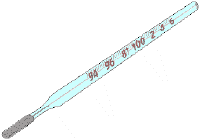
| Mercury is used in: | thermometers barometers blood pressure meters quicksilver lamps sun lamps medicinal purposes (formerly more than now) |
Alchemists used to especially watch the transitions from solid to liquid, etc. These transitions were called: 'sal' (from solid to liquid), 'mercur' (from liquid to gaseous) and 'sulphur' (from gaseous to a state of heat). So mercury was in the middle area. In plants one would say: 'sal' - roots, 'mercur' - the leaves winding around the stem, 'sulphur' - the flower.
Mercury is very mobile. It is a liquid that does not wet its surroundings. But all metals dissolve in it except iron and iron-related metals. It has a shiny silver color and in a liquid state one never gets to take a look at the inside.
Tin. Every metal becomes softer through heating. But though tin first does become softer, from 160° C it becomes much harder, even brittle. The other way around: when chilled, tin falls apart to powder. At -50° C, the normal mineral form cannot exist. When one heats tin up to 232° C it becomes liquid which is the lowest melting point of all heavy metals (except mercury). Lead melts at 327° C and boils at 1700° C. The boiling point of tin is 2300° C. Tin 'resists' heating up. Melting always goes together with the losing of form. Mercury does not want to be made into a form; tin does not want to lose its form.
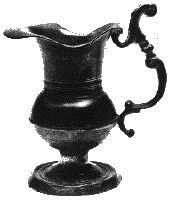
| Tin is used in: | making of letters (influences the legibility) solder essential for making bronze (93 % copper and 7 % tin) - adds form staying power to the structure formerly used for plates, cups, etc. tin cans (preservation) |
There is but little tin in the human body and it is not spread out. There is tin in the muscle of the tongue and in the mucous membrane of the tongue. Also in the skin. The tongue not only tastes, but investigates the texture of the food.
Tin is also used in silver paper to wrap up chocolate, etc. (Silver paper = stanniol; tin = stannum in Latin). It gives contour to the already existing form. Skin gives contour to the body.
To laugh is quicksilver; to cry is tin (to become rigid).
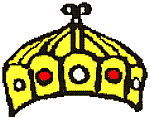
Gold is something 'to look at'. It used to be a symbol for regal power. Now one finds it in underground safes. In a way gold is bound up with the spreading of 'culture'. Think of the gold rushes.
If you hold gold leaf against the light between two pieces of glass it has a greenish color. Gold is used to 'intensify' in the making of colors.
Gold is the heaviest of all minerals: SG = 19.
Gold can be flattened so much that 10,000 leaves of gold are less than 1 mm thick.